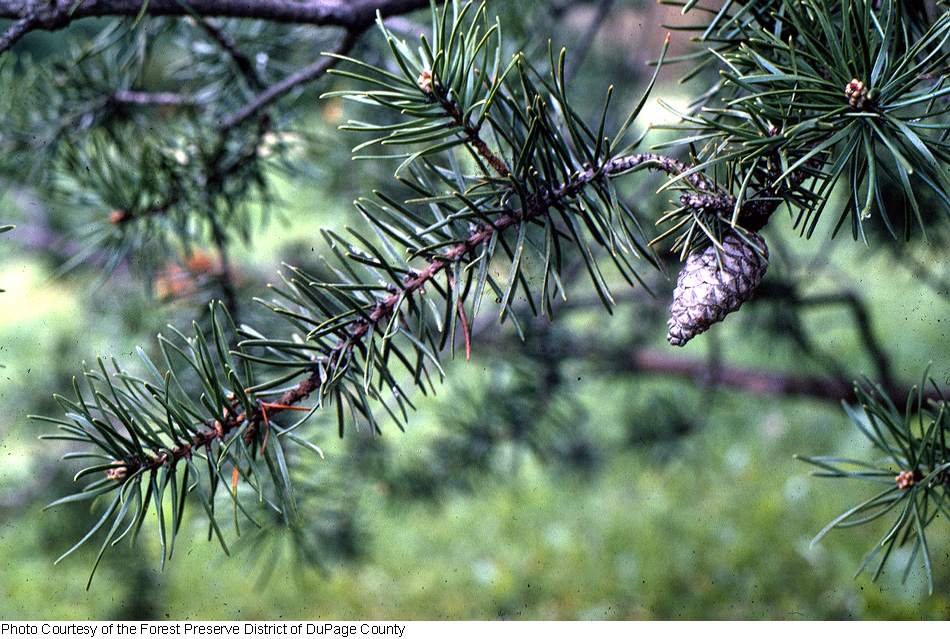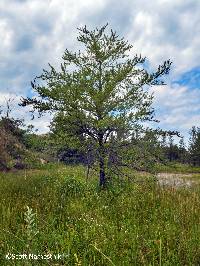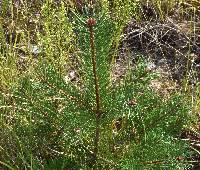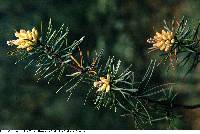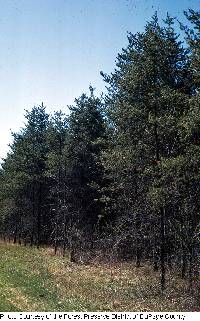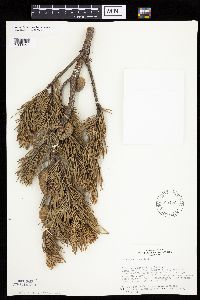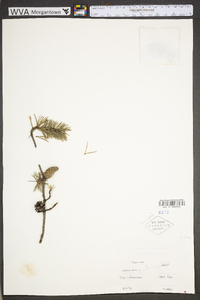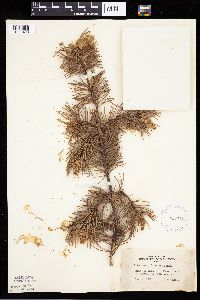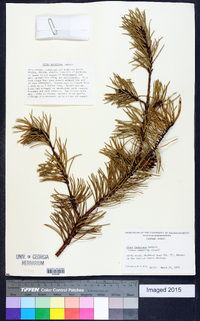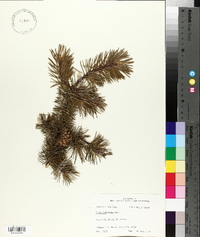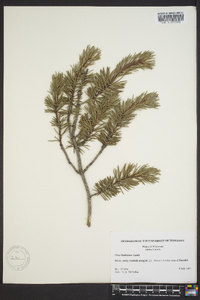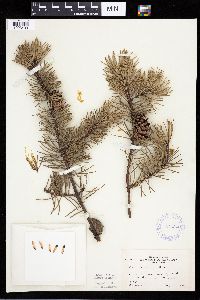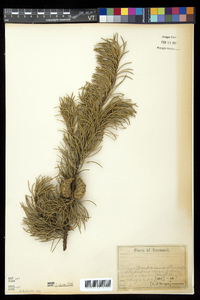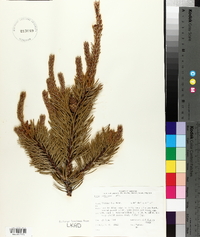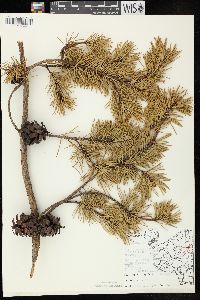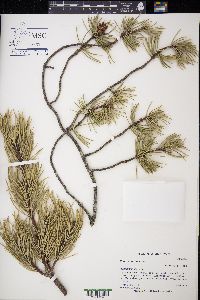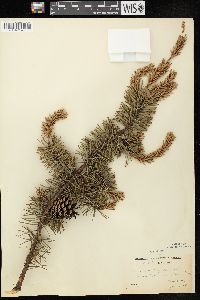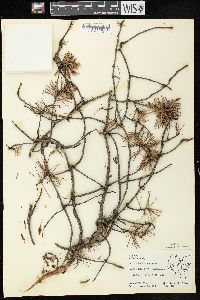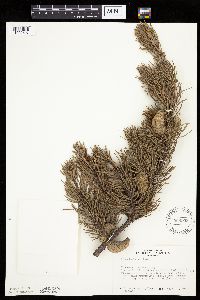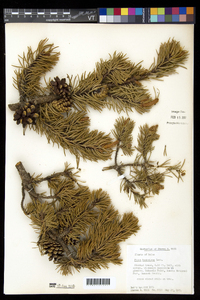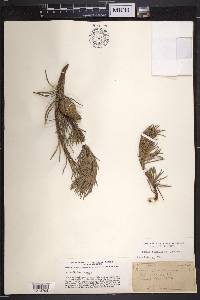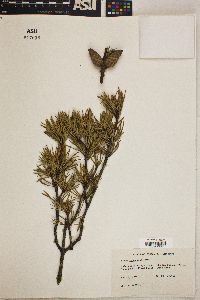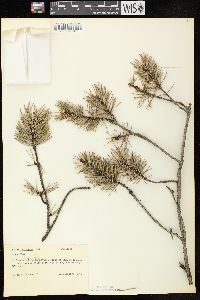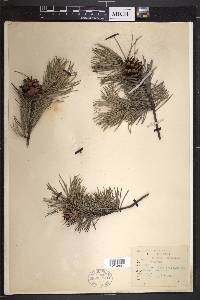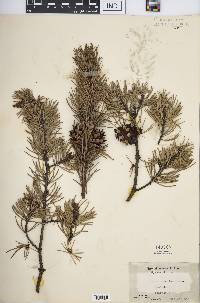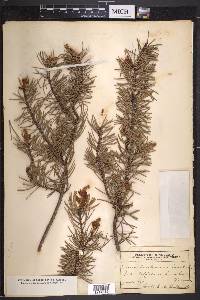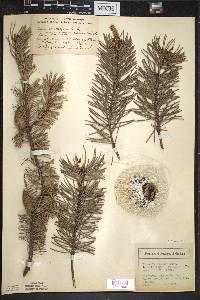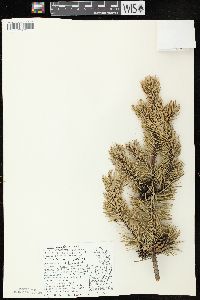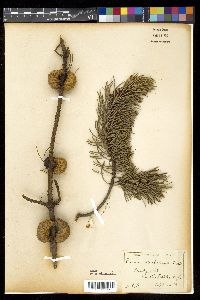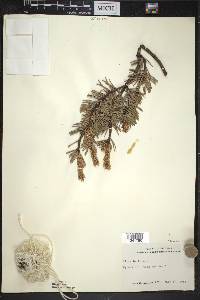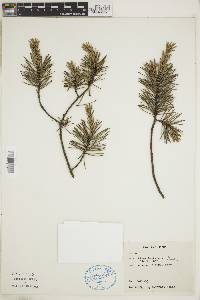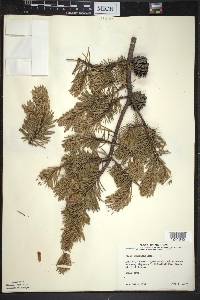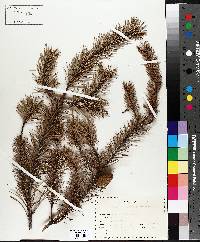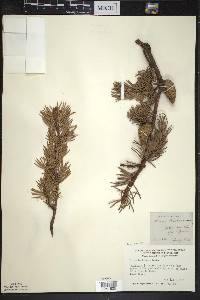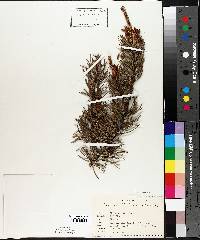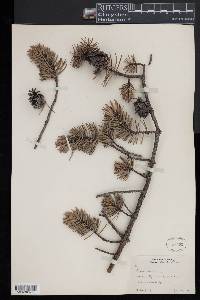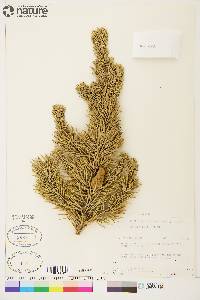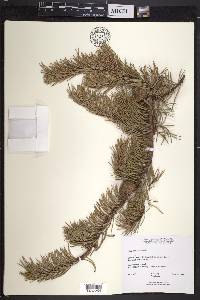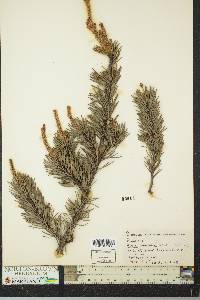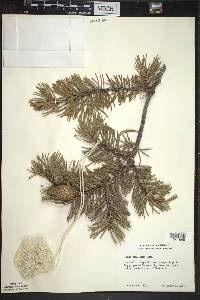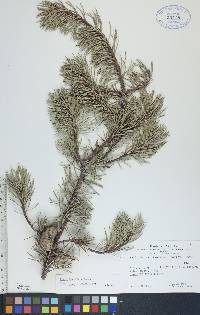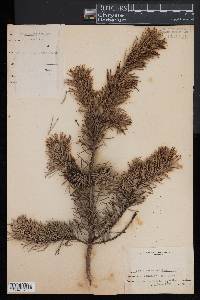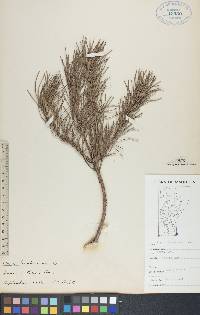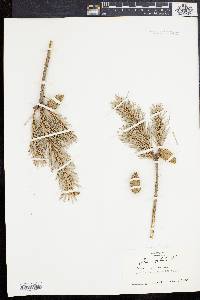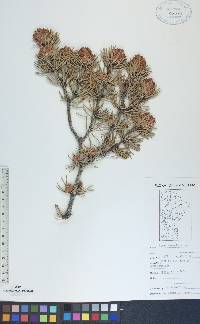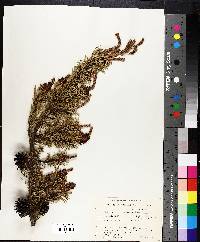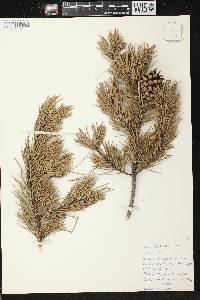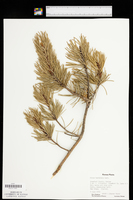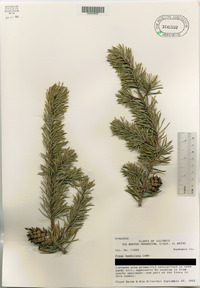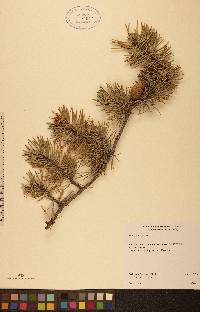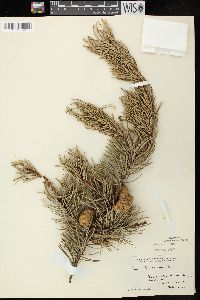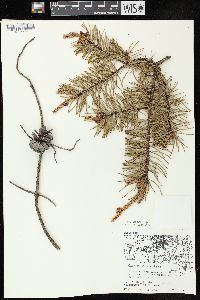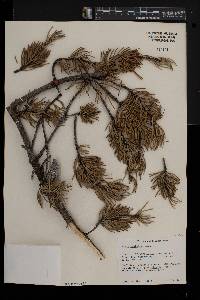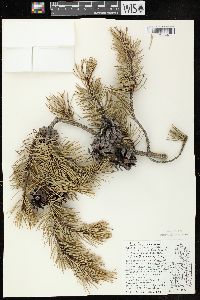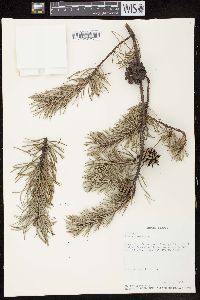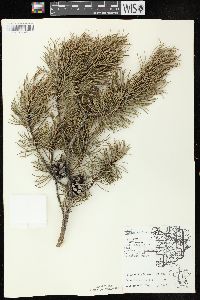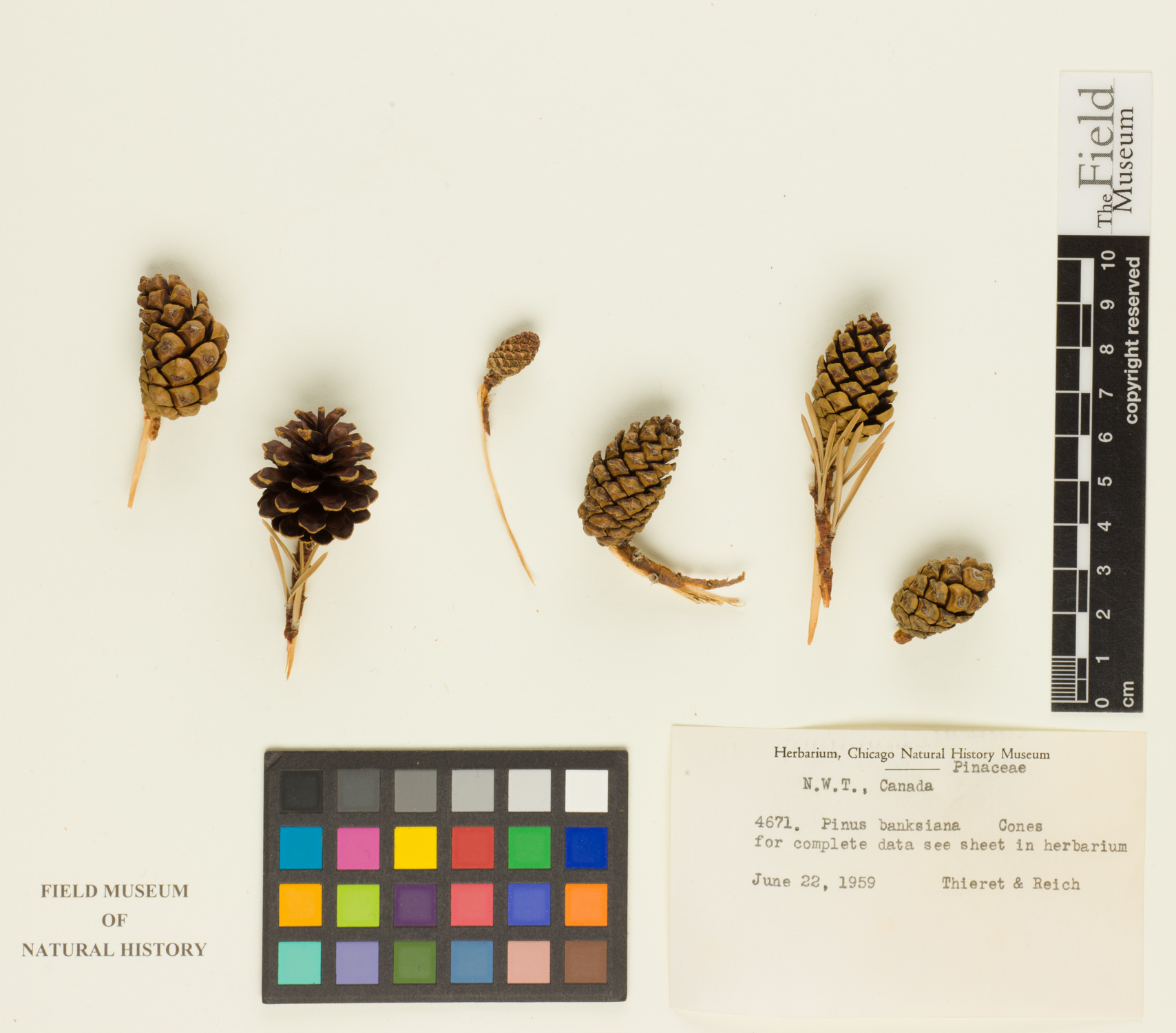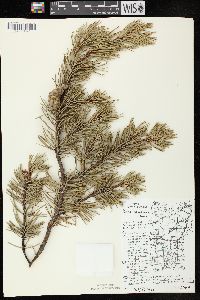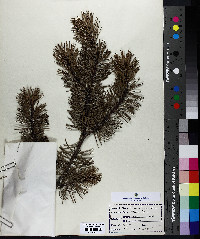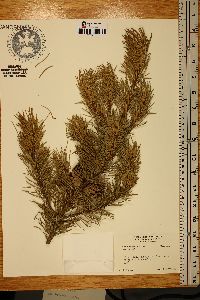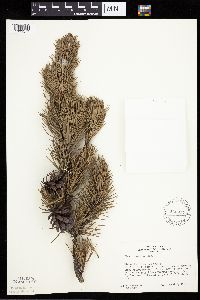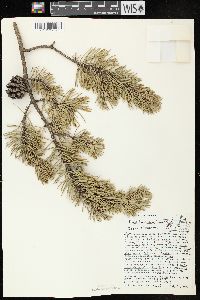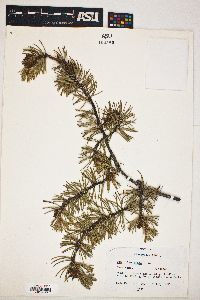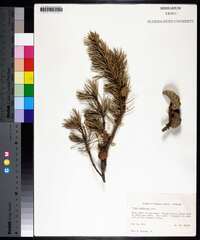
|
|
|
|
Family: Pinaceae
Jack Pine, more...Gray Pine
[Pinus divaricata (Aiton) Sudw., morePinus divaricata var. musci B. Boivin] |
Trees to 27m; trunk to 0.6m diam., straight to crooked; crown becoming irregularly rounded or spreading and flattened. Bark orange- to red-brown, scaly. Branches descending to spreading-ascending, poorly self-pruning; twigs slender, orange-red to red-brown, aging gray-brown, rough. Buds ovoid, red-brown, 0.5--1cm, resinous; scale margins nearly entire. Leaves 2 per fascicle, spreading or ascending, persisting 2--3 years, 2--5cm ´ 1--1.5(--2)mm, twisted, yellow-green, all surfaces with fine stomatal lines, margins finely serrulate, apex acute to short-subulate; sheath 0.3--0.6cm, semipersistent. Pollen cones cylindric, 10--15mm, yellow to orange-brown. Seed cones maturing in 2 years, shedding seeds soon thereafter or often long-serotinous and shedding seeds only through age or fire, upcurved, asymmetric, lanceoloid before opening, ovoid when open, 3--5.5cm, tan to light brown or greenish yellow, slick, nearly sessile or short-stalked, most apophyses depressed but increasingly mammillate toward outer cone base; umbo central, depressed, small, sunken centrally, unarmed or with a small, reflexed apiculus. Seeds compressed-obovoid, oblique; body 4--5mm, brown to near black; wing 10--12mm. 2 n =24. Fire successional in boreal forests, tundra transition, dry flats, and hills, sandy soils; 0--800m; Alta., B.C., Man., N.B., N.W.T., N.S., Ont., P.E.I., Que., Sask.; Ill., Ind., Maine, Mich., Minn., N.H., N.Y., Pa., Vt., Wis. Pinus banksiana reaches its largest size and best form in Canada. In western Alberta and in northeastern British Columbia, it is sympatric with P . contorta and forms hybrid swarms with that species. Jack pine ( Pinus banksiana ) is the territorial tree of the Northwest Territories.
Tree 12 - 22 m tall, trunk diameter 20 - 30 cm Bark: deep reddish brown to dark gray, thin, rough, with narrow, scaly ridges. Twigs: thin, rough, yellowish green, becoming deep reddish brown with age. Buds: pale brown. Terminal bud 6 mm long and egg-shaped with a rounded apex. Lateral buds smaller. Form: open, irregular, and scrubby looking. Pollen cones: yellow, 1 - 2 cm long, cylindrical, and clustered at the base of new shoots throughout the crown. Needles: in clusters of two, yellowish green, 2 - 4 cm long, slightly twisted, stiff, sharp-pointed, and growing from a short, persistent sheath. Young seed cones: deep purple, small, spherical, at the tips of last year's shoots in the upper and mid-crown. Pollination between cones occurs from early May to early June. Mature seed cones: woody, stalkless, upright, brownish yellow, 4 - 7 cm long, oblong-conical, and curved. Scales lack prickles and are thickest at the apex. The cones remain closed for many years or until fire opens them (serotinous). Seeds blackish, 3 mm long, triangular, with wings about 10 mm long. Similar species: The similar Pinus pungens differs by having slightly longer (5 - 10 cm) bluish green needles and heavy, egg-shaped seed cones bearing thick, prickled scales. Pinus sylvestris has distinctly orangish brown bark in the mid and upper trunk, as well as bluish green needles and egg-shaped seed cones. Also, the scales of its seed cones thicken at the apex into a four-sided, unarmed point. Pinus virginiana bears soft, flexible, dark green needles and reddish brown, egg-shaped seed cones which are armed with a prickle. Habitat and ecology: Seldom occurs far from lake Michigan, usually in areas with a history of fire. Found in foredunes and higher, more mature dune areas in dry woodlands, but is most common around the edges of interdunal ponds behind the first major dunes (pannes). Occurence in the Chicago region: native Notes: Pinus banksiana is a fire-adapted species. Heat from fire enables the serotinous, resin-bonded cones to open, and the seeds germinate on the denuded ground. The wood is used for fence posts, railroad ties, pulp, fuel, and boxes. Etymology: Pinus is the Latin word for pine. Banksiana refers to and honors Sir Joseph Banks (1743-1820), a distinguished botanist. Author: The Morton Arboretum Usually a small tree, or sometimes to 20 m, with spreading branches; winter buds less than 1 cm, pale cinnamon-brown, very resinous; lvs in 2's, persisting 2-3 years, usually curved, 2-3.5 cm נ1-1.5 mm; cones erect or nearly so, long-persistent, typically remaining closed for several or many years or until fire, usually curved and asymmetrical, conic, yellowish-brown, 3-5 cm, the apophysis thickened, the umbo not elevated, spineless or with a minute, reflexed spine; seeds ca 1.5 cm. Dry or sterile, sandy or rocky soil; Que. to Me., Vt. and n. N.Y., w. to nw. Ind., Minn., and the Mackenzie Valley. Gleason, Henry A. & Cronquist, Arthur J. 1991. Manual of vascular plants of northeastern United States and adjacent Canada. lxxv + 910 pp. ©The New York Botanical Garden. All rights reserved. Used by permission. From Flora of Indiana (1940) by Charles C. Deam This pine is found only on the dunes near Lake Michigan. I can recall when it was common on the low dunes in Lake County but it has now nearly disappeared on account of advancing civilization. …… Indiana Coefficient of Conservatism: C = 10 Wetland Indicator Status: FACU |
|
|
|

